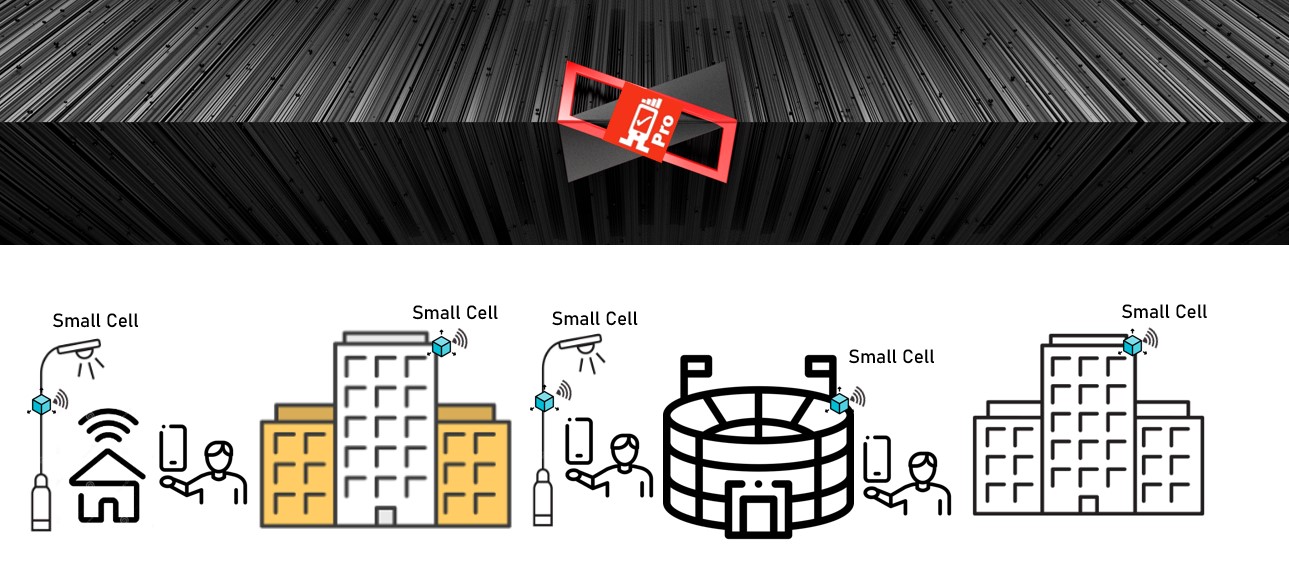RF Drive Test Software & LTE 4G Tester tools along with Modernisera mobilanslutning
Introduction
These are the large towers you see mounted on masts or rooftops in cities, towns, along highways, or on rural hills. Macrocells cover a wide area, often spanning from a few kilometers to tens of kilometers, powered by high-energy base stations. However, with the surge in mobile data traffic over the past decade, there’s a pressing need to increase network capacity. One of the most effective ways to address this is through the dense deployment of small cells, which work alongside existing macrocells. So, now let us see How Can Small Cells Transform Mobile Connectivity and Meet Growing Data Demands along with User-friendly LTE RF drive test tools in telecom & RF drive test software in telecom and User-friendly 4G Tester, 4G LTE Tester, 4G Network Tester and VOLTE Testing tools & Equipment in detail.
What are Small Cells?
Unlike macrocells, which cover extensive areas, small cells typically range from ten meters to several hundred meters. This category includes femtocells, picocells, microcells, and metro cells, each serving different environments such as residential areas, enterprises, urban locales, and rural regions. Small cell antennas are much smaller and can be attached to buildings, rooftops, utility poles, and other public structures.
Small Cells in Real Environments
While macrocells and small cells serve different purposes, they complement each other in enhancing network performance.
Macro Cells vs. Small Cells
These towers are prominent and provide extensive coverage, though the signal strength diminishes towards the edges of their coverage area. Macrocells are ideal for large, low-density populations such as residential areas.
Small Cell: In contrast, small cells are discreet, often mounted on existing structures like rooftops and utility poles. Despite their compact size, they play a crucial role in areas with high data demand, such as downtowns, stadiums, and theme parks. Small cells offer coverage for just a few hundred feet, making them perfect for densely populated areas where high-capacity data transfer is needed.
Motivations for Deploying Small Cells
The rapid growth in mobile data usage, driven by the widespread adoption of smart devices and bandwidth-intensive services like 4K/8K video streaming, has necessitated continuous network upgrades. Mobile operators aim to enhance their networks to support higher capacities and user throughput. This involves maintaining multi-standard radio access networks that include 4G and earlier technologies, while also developing 5G networks to meet future connectivity needs.
Several factors drive the preference for small cell deployment:
Improving Network Coverage: Small cells ensure reliable connections indoors, outdoors, in rural areas, and even on aircraft, ships, and trains. Since over 80% of mobile usage occurs indoors, small cells play a vital role in providing consistent coverage.
Enhancing Spectrum Efficiency: By utilizing existing spectrum more effectively, small cells allow spectrum license holders to maximize the value of their assets.
Increasing Network Capacity: Small cells can significantly boost cellular capacity in a given area, offering a more efficient solution than adding more macrocells.
Lowering Energy Requirements: Small cells consume less energy than macrocells, reducing the carbon footprint of mobile networks and enabling the use of renewable energy sources for operations.
Power Levels of Small Cells
Residential Small Cells (Femtocells): These operate at very low power levels, usually below 0.1 watts, covering a typical home size. They are comparable to standard WiFi access points.
Enterprise Small Cells: These transmit between 0.02 and 0.25 watts, with coverage extending up to around 200 meters, depending on service quality and user demand.
Urban Small Cells: With power levels between 0.25 and 6.0 watts, urban small cells provide extra coverage and capacity to serve multiple users in dense areas.
Deploying Small Cells Where Needed
Small cells, including femtocells, picocells, microcells, and metro cells, are deployed in various environments such as homes, enterprises, urban areas, and rural regions. When interconnected, these deployments are known as distributed antenna systems (DAS) or in-building systems (IBS), which enhance service within existing structures.
Typical deployment scenarios for small cells include outdoor setups in urban and rural areas and indoor installations in enterprise spaces like malls and stadiums. The reasons for these deployments are:
High Capacity: Small cells offer significant capacity gains compared to macro-only deployments.
Low-Cost Deployment: They require minimal capital and operational expenditure, leveraging existing infrastructure and backhaul.
Easy to Deploy: Small cells are user-friendly, often requiring simple plug-and-play installation by customers.
Flexible Deployment: Small cells can be strategically placed in high-demand areas without detailed radio frequency planning.
Conclusion
By complementing traditional macrocells, small cells provide a flexible and efficient solution to modern mobile network challenges. As the demand for high-speed internet continues to rise, small cells will play an increasingly important role in ensuring robust and reliable mobile communication for all users. Also read similar articles from here.

